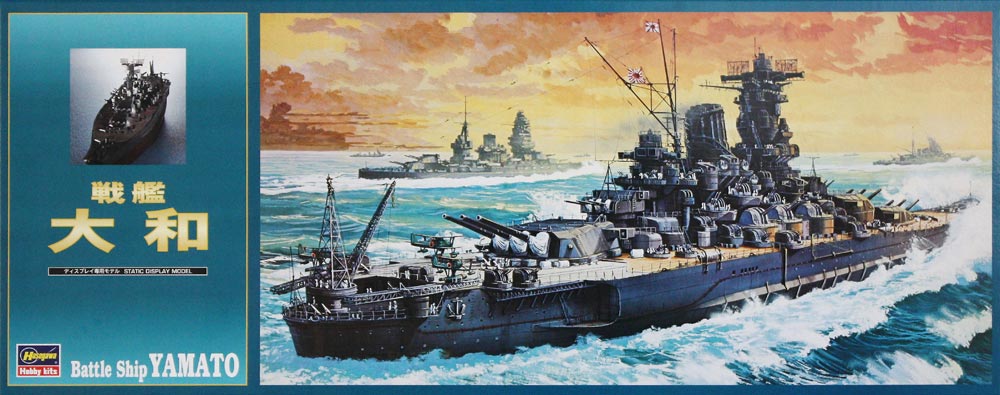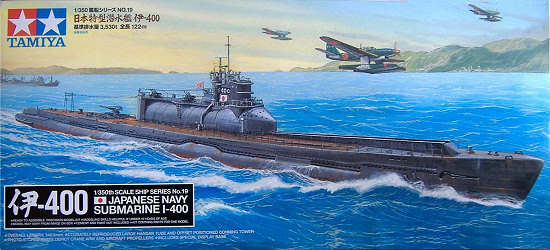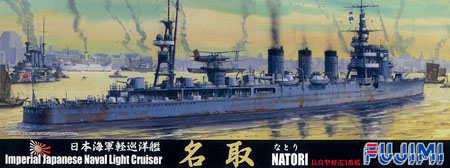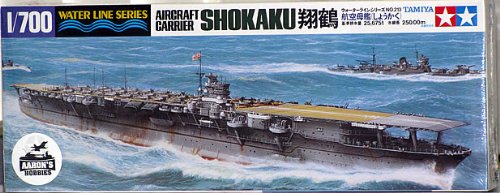If the Imperial Japanese were focused on any one type of war vehicle at the expense of others, it warships. Though this site is more focused on ground vehicles and planes (in particular the lesser-known ones), a whole site could be dedicated to Japanese ships and their exploits. I will cover them here briefly in a single page, however because of how important they were to Imperial Japan’s strategy during WW2. The number and variety of warships the Japanese had during the War in the Pacific is impressive, and the records kept on each were extensive enough that you could lose yourself in them for days. Rare and lesser-known warships also hold unique story possibilities for gaming scenarios.
When it comes to gaming, the focus of Imperial Japan’s role in WW2 has long been centered around the sea-based conflicts primarily between the U.S. and Japan, particularly the iconic battles of Pearl Harbor, Midway, and the Coral Sea, among others. Naturally video games have gravitated toward this side of the conflict. This is in contrast to the focus on ground campaigns in Europe or North Africa with Axis powers Germany and Italy. When “Pacific” is used in the title of a game, it has generally meant that warships were the focus. A notable exception from 2015 is Slitherine Software’s Order of Battle: The Pacific, where land, air, and sea units share the campaign.
Perhaps one reason for this focus is the reputation of the vehicles themselves. Just as Germany had its feared “Tiger” tanks, Japan had its deadly aircraft carriers, impressive battleships, and dreaded “long lance” torpedoes.
Also owing to this reputation, Japan plays a big role in some multiplayer first-person games that allow direct control of warships. Two prominent examples are Steel Ocean and World of Warships. These games provide excellent visceral and fast-paced gameplay with detailed and realistic models of battleships, submarines, and aircraft carriers of WW2. Since Japan was a major naval power during WW2, Japanese machines of war are prominently featured in these games.
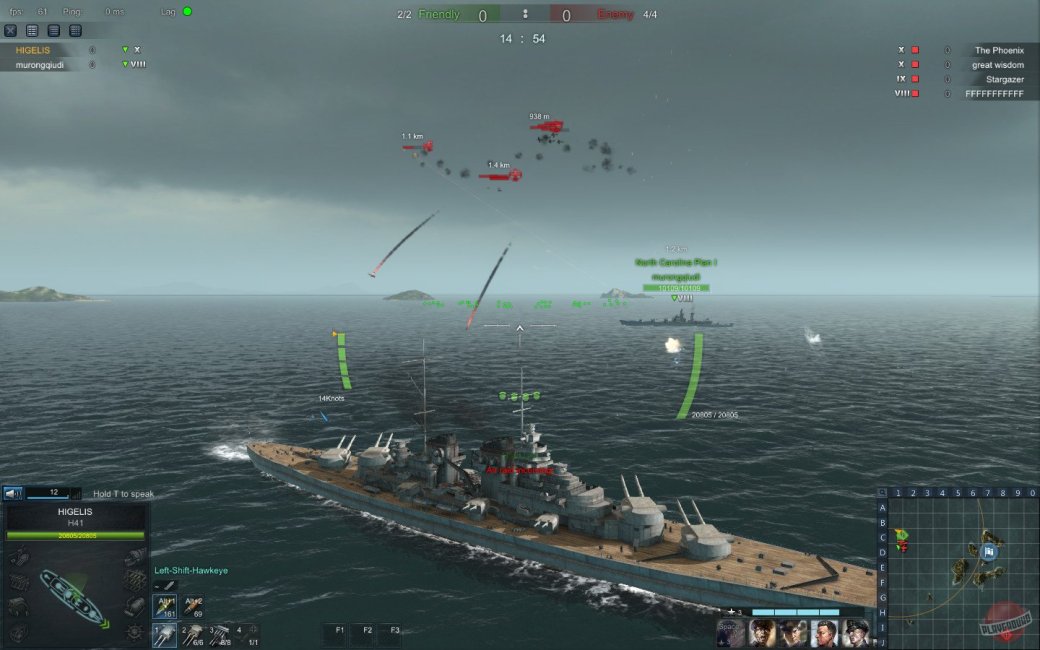
If there is any one ship that stands out above the rest it was the battleship Yamato. Yamato ’s main battery consisted of nine 46 cm (18.1 in) 45 Caliber Type 94 naval guns—the largest caliber of naval artillery ever fitted to a warship. That said, there are many other less glamorous or less well-known warships that played a role in Imperial Japan’s conquest of the sea, and without much argument one could make the case for why the smaller ships and in particular aircraft carriers held much more importance in the war. After all, the Yamato barely even saw battle before it was attacked and destroyed by carrier aircraft and submarines. Still, it was a symbol of Japan’s naval might, a tool of propaganda for a highly militaristic nation, and a fearsome warship to behold.
A good source for models (which could be converted to 3D models) is Hasegawa’s “Waterline Series” of plastic model ships which tend to be affordable and not too difficult to build. The Momi of the 1/700 Waterline series, for example, can be had for around 700 yen at a hobby shop in Akihabara, Tokyo, or between 5-12 U.S. dollars on Ebay. Tamiya and Fujimi also make good authentic-looking models.
Here are a few other warships that could be added to any game:
1. Ikazuchi: The Japanese destroyer Ikazuchi (the namesake of this site) is a good ship to introduce in a game scenario that includes landing forces during initial Japanese conquests at the opening of the War in the Pacific. The Ikazuchi provided cover for landing operations at Hong Kong, the Battle of Ambon, and the Battle of Timor in the Netherlands East Indies. When introduced in the early 1930s it was among the most powerful destroyers in the world, considered on par with light cruisers.
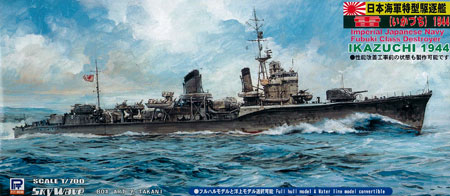
2. I-400 Class Submarine: Almost science fiction but fact, the I-400 class submarines were capable of storing and launching attack airplanes meant for an assault on the West Coast of the U.S. Inspired by the success at Pearl Harbor, General Yamamoto was behind the push for 18 of these monstrous submarines. 60% larger than the largest contemporary American submarine, the USS Argonaut, they had more than twice the range as well. In the end only a few were produced, and the surprise attack never happened. Among other armament, the I-400 class submarines could carry 3 Aichi M6A1 Seiran sea-planes and had no less than 8 x 533 mm forward torpedo tubes, making them both versatile and fearsome submarines in their own right armed with Japan’s deadly “long lance” torpedoes.
3. Natori: A Nagara-class Light Cruiser, the Natori was engaged in a number of actions, notably the Battle of Sunda Strait, which you can read more about in the article below. On December 21, 1942, Natori embarked a Special Naval Landing Force, which it disembarked at Hollandia, New Guinea. Earlier in the war, in 1941, it escorted the the 4th Tank Regiment to Lingayen Gulf.
4. Aircraft Carrier Shōkaku: Japan was the first nation to make heavy use of and prove aircraft carriers as a naval weapon, ironically dooming their own massive Battleship Yamato in the process. The Shokaku (and her sister carrier the Zuikaku) could carry 70–80 aircraft. Its reinforced structure compared favorably to that of contemporary Allied aircraft carriers and enabled Shōkaku to survive serious damage during the battles of the Coral Sea and Santa Cruz.
Original Photos:
Photo references of Japanese warships are not difficult to come by, though rarer examples may take a bit of searching. Occasionally an excellent rare photo of a ship not already covered in existing media/games or in scale model form can be found at auction or on Japanese blogs. Finding a way to use these in games while researching their history can lead to new and interesting possible gameplay scenarios.
A few examples include the following:
- Kaidai II (I-152 class)
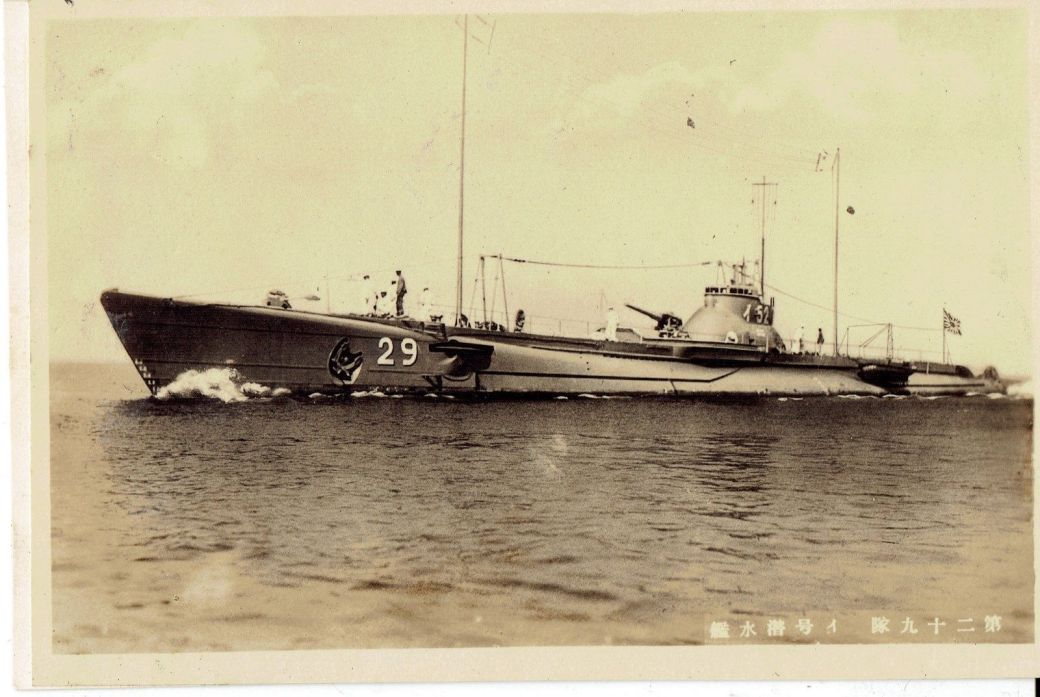
I-152 (renamed 52 in 1924)
Project number S25. There was only 1 Kaidai II, I-152 planned under the Eight-six fleet together with the I-51. She was completed in 1924,
She was completed in 1924, used as a training vessel until mid-1942, then struck from service. She was scrapped in 1946.
8 × 533 mm (21 in) TTs
(6 × bow, 2 × aft)
• 16 × 6th Year Type torpedoes
• 1 × 120 mm (4.7 in) L/45 3rd Year Type Naval gun
• 1 × 76.2 mm (3.00 in) L/23.5 AA gun
2. Manchukuo Navy CHIN YEN river gunboats (1935)
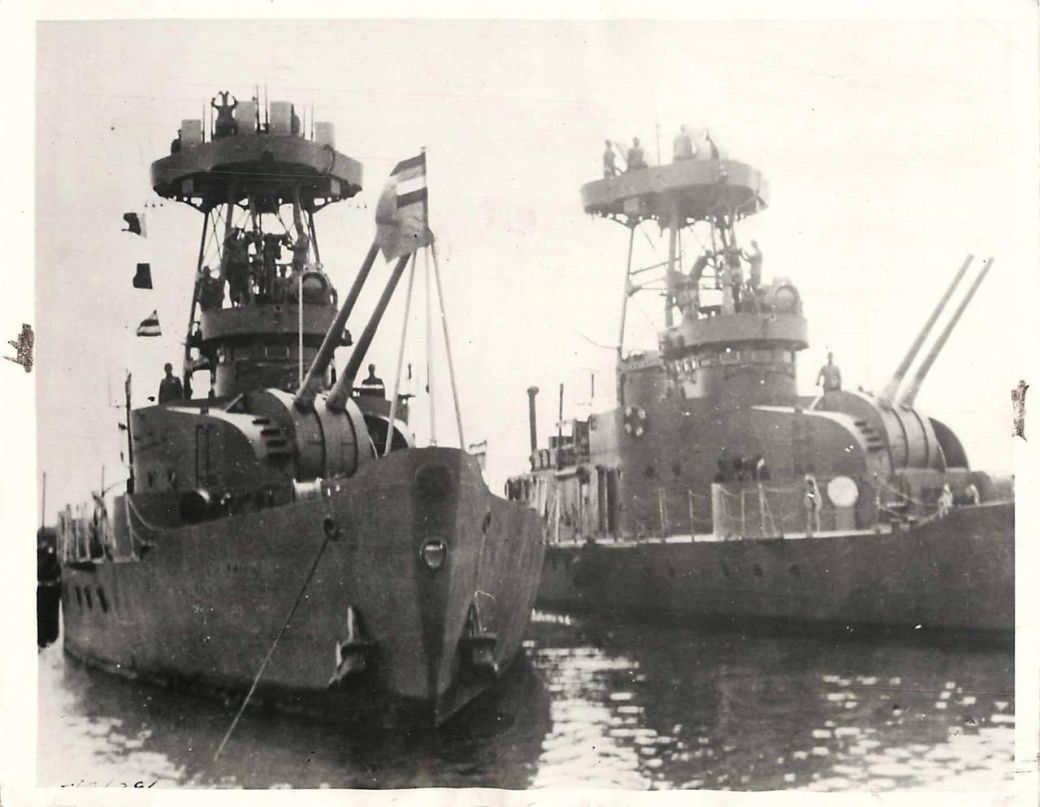
| Name | No | Builder | Laid down | Launched | Comp | Fate |
| 智言 <Chin Yen> | Harima, Japan // Kawasaki, Harbin | 1934 | 2/7/1935 | 1935 | captured by USSR 22/8/1945 (KL-56) | |
| 定邊 <Ting Pien> | Harima, Japan // Kawasaki, Harbin | 1934 | 2/7/1935 | 1935 | captured by USSR 22/8/1945 (KL-58) |
| Displacement full, t | 290 |
| Length, m | 59.4 |
| Breadth, m | 8.80 |
| Draught, m | 0.91 |
| No of shafts | 2 |
| Machinery | diesels |
| Power, h. p. | 800 |
| Max speed, kts | 13 |
| Fuel, t | diesel oil |
| Armament | 1 x 2 – 120/45 10-shiki, 1 x 1 – 120/45 10-shiki, 2 x 1 – 70/12 mortars, 3 x 2 – 13.2/76, 80 mines |
| Complement | 70 |
Ship project history: Slightly improved version of Shun Tien class. They were laid down in Japan on Harima Zosensho, in taken apart kind transferred to Kawasaki in Harbin, where they were launched and completed. Japanese names were Shinjin and Teiken.
SOURCE (Navypedia)
HISTORICAL SCENARIOS
The following articles provide a taste of the sort of naval battles the Imperial Japanese Navy engaged in during WW2:
Battle of the Java Sea
Receiving word that the major Japanese invasion force was approaching Java protected by a formidable surface unit, Admiral Doorman, a Dutch Rear Admiral who commanded ABDACOM Naval forces, a hastily organized multinational naval force formed to defend the East Indies, decided to meet and seek to destroy the main Japanese convoy of transport ships. Sailing on 26 February 1942 with the cruisers Houston, HMAS Perth, HNLMS De Ruyter, HMS Exeter, HNLMS Java and 10 destroyers, he met the Japanese support force under Admiral Takeo Takagi consisting of four cruisers and 13 destroyers.
In the battle on 27 February 1942, Doorman’s forces met the Japanese fleet for the first time in the late afternoon. As Japanese destroyers laid smoke, the cruisers of both fleets opened fire. After one ineffective torpedo attack, the Japanese light cruisers and destroyers launched a second and sank the destroyer HNLMS Kortenaer. HMS Exeter and the destroyer HMS Electra were hit by gunfire, Electra sinking shortly after. At 17:30 Admiral Doorman turned south toward the Java coast, not wishing to be diverted from his main purpose: the destruction of the convoy itself.
The Allied fleet dodged another torpedo attack and followed the coastline, during which time the destroyer HMS Jupiter was sunk, either by mine or internal explosion. The destroyer HMS Encounter was detached to pick up survivors from Kortenaer, and the American destroyers, their torpedoes expended, were ordered back to Surabaya. With no destroyer protection, Doorman’s four remaining ships turned north again in a last attempt to stop the invasion of Java.
At 23:00 the same night, the cruisers again encountered the Japanese surface group. On parallel courses the opposing units opened fire, and the Japanese launched a torpedo attack 30 minutes later. De Ruyter and Java, caught in a spread of 12 torpedoes, exploded and sank, carrying their captains and Admiral Doorman down with them. Following old Naval tradition, Doorman chose to “go down with his ship.”
This battle on 27 February 1942 was the largest surface engagement since the Battle of Jutland in World War I. By the end of the day, two cruisers and 3 destroyers of the ABDA naval force had been sunk, the remaining destroyers had been ordered back to Surabaya, the cruiser Exeter had been damaged and, before his own ship was sunk, Doorman had ordered the cruisers Perth and Houston to retire.
Battle of Sunda Strait
On 28 February 1942, the day after the Battle of the Java Sea, the ABDA cruisers Perth and Houston steamed into Banten Bay. It is believed that they had no knowledge of the Japanese battle fleet, their last intelligence report having stated that the only Japanese warships in the area were 50 miles (43 nmi) away and headed away. However, it is possible that they were hoping to damage the Japanese invasion forces there. The two cruisers were attacked as they approached the bay, but evaded the nine torpedoes launched by destroyer Fubuki.
According to ABDA post-battle reports, the cruisers then reportedly sank one transport and forced three others to beach. It is also possible and viewed in some quarters as more likely, however, that the transports were damaged by “friendly fire” by some of the over 90 Long Lance torpedoes fired at the two ABDA cruisers by Japanese destroyers. A Japanese destroyer squadron blocked Sunda Strait, their means of retreat, and the Japanese heavy cruisers Mogami and Mikuma stood dangerously near. The Houston and Perth could not withdraw. Perth came under fire at 23:36 and in an hour had been sunk from gunfire and torpedo hits. On board the Houston, shells were in short supply in the forward turrets, so the crew manhandled shells from the disabled number three turret to the forward turrets. Houston then fought alone until soon after midnight, when she was struck by a torpedo and began to lose headway.
Houston ’s gunners had scored hits on three different destroyers and sunk a minesweeper, but then suffered three more torpedo explosions in quick succession. Captain Albert Rooks was killed by a bursting shell at 00:30 and as the ship came to a stop Japanese destroyers moved in, machine gunning the decks. A few minutes later, Houston rolled over and sank, her ensign still flying. Of the original crew of 1,061 men, 368 survived, including 24 of the 74-man USMC detachment, only to be captured by the Japanese and interned in prison camps.
